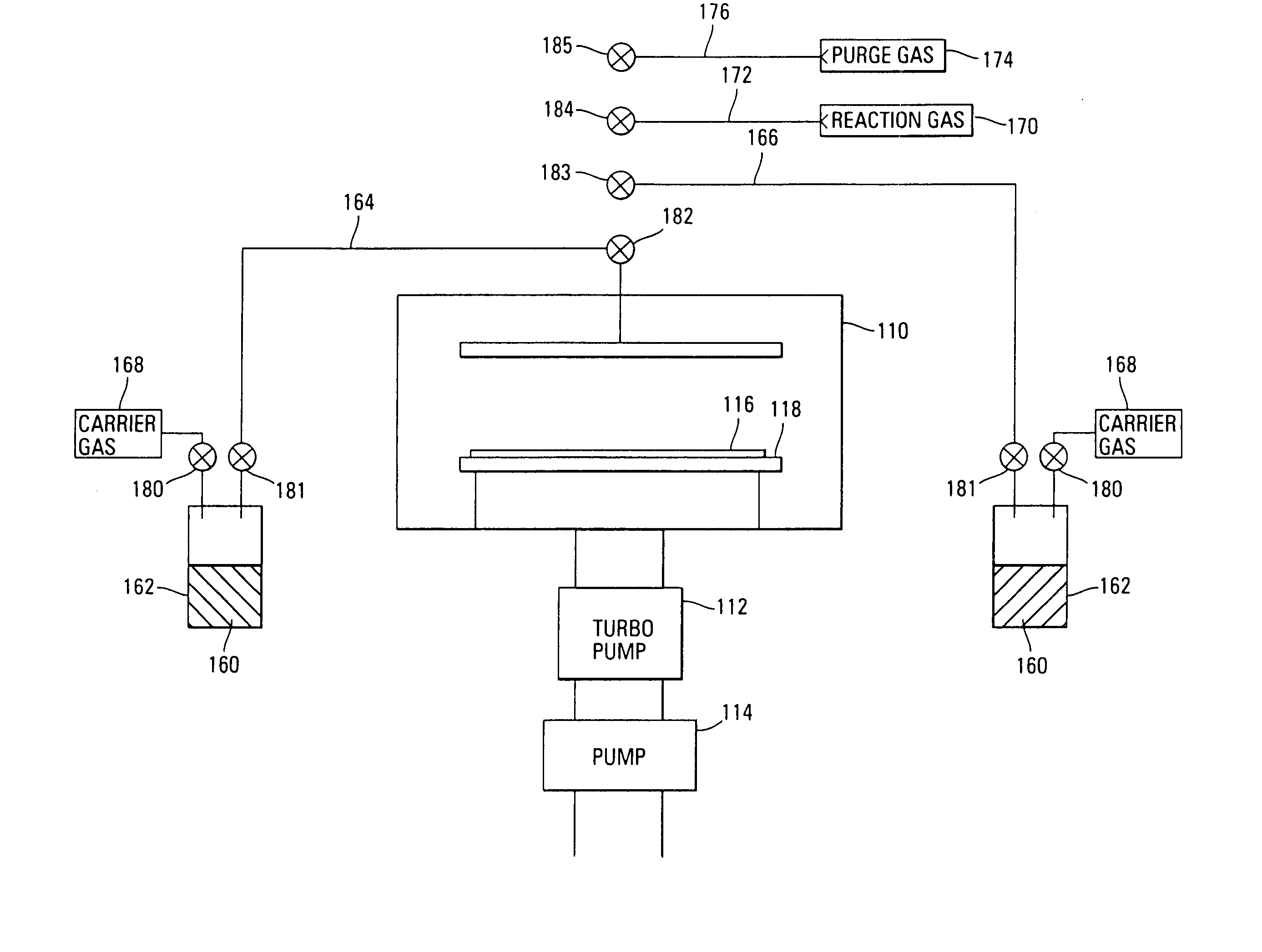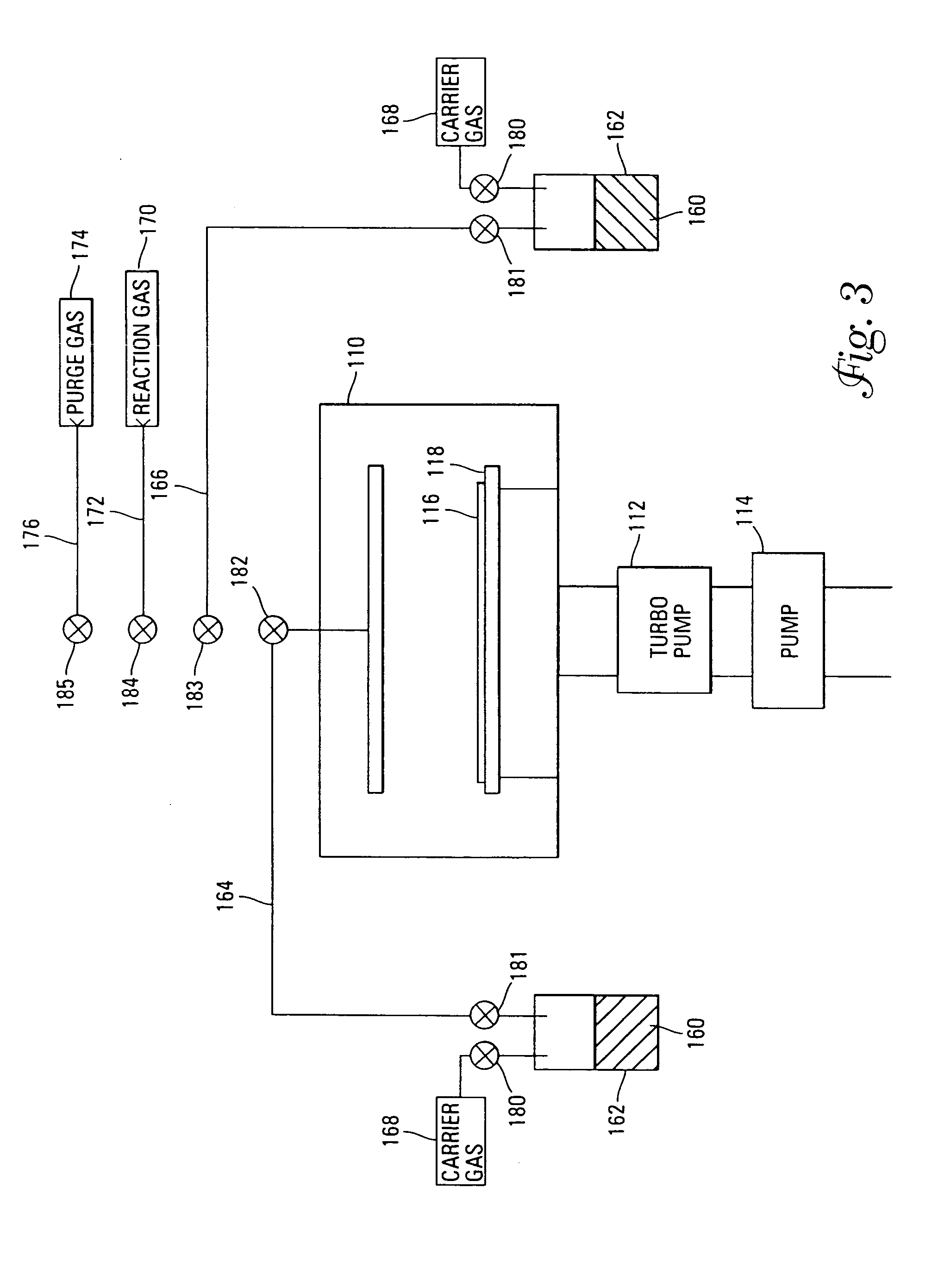Systems and methods of forming tantalum silicide layers
a technology of silicide layer and metal silicon nitride, which is applied in the direction of coating, chemical vapor deposition coating, capacitor, etc., can solve the problem that the composition of formed metal silicon nitride barrier layer such as ta—si—n cannot be uniform across the substrate surface, and achieve the effect of minimizing detrimental gas phase reactions and improving the control of layer thickness
- Summary
- Abstract
- Description
- Claims
- Application Information
AI Technical Summary
Benefits of technology
Problems solved by technology
Method used
Image
Examples
example
Example 1
Pulsed Chemical Vapor Deposition of Tantalum Silicide
[0064] Using a pulsed CVD method, the following precursor compounds were pulsed for 200 cycles in a deposition chamber as described in FIG. 3 containing a borophosphosilicate glass (BPSG) substrate, each cycle consisting of pulses in the following order: (1) tantalum pentafluoride (Alfa Aesar, Ward Hill, Mass.; and (2) disilane (VOC Gases). During each cycle, excess amounts of each precursor compound not chemisorbed were purged from the chamber after chemisorption and prior to the introduction of the next precursor compound using an argon sweep at 30 mL / min and a vacuum pump. The substrate temperature was kept at approximately 275° C. throughout the entire deposition process.
[0065] At the end of the process, a 1700 Å thick miffor-like layer of tantalum silicide was formed having a resistivity of 255 μΩ-cm. The layer contained tantalum, silicon, and a trace of oxygen as determined by x-ray photoelectron spectroscopy (XP...
PUM
| Property | Measurement | Unit |
|---|---|---|
| temperature | aaaaa | aaaaa |
| pressure | aaaaa | aaaaa |
| adsorption energies | aaaaa | aaaaa |
Abstract
Description
Claims
Application Information
 Login to View More
Login to View More - R&D
- Intellectual Property
- Life Sciences
- Materials
- Tech Scout
- Unparalleled Data Quality
- Higher Quality Content
- 60% Fewer Hallucinations
Browse by: Latest US Patents, China's latest patents, Technical Efficacy Thesaurus, Application Domain, Technology Topic, Popular Technical Reports.
© 2025 PatSnap. All rights reserved.Legal|Privacy policy|Modern Slavery Act Transparency Statement|Sitemap|About US| Contact US: help@patsnap.com



